 W
WThe book An Album of Fluid Motion is a collection of black-and-white photographs of flow visualizations for different types of fluid flows. These flows include:Creeping flow Laminar flow Flow separation Vortices Fluid instability Fluid turbulence Free-surface flow Natural convection Subsonic flow Shock waves Supersonic flow
 W
WAll the Women Are White, All the Blacks Are Men, But Some of Us Are Brave (1982) is a landmark feminist anthology in Black Women's Studies printed in numerous editions, co-edited by Akasha Gloria Hull, Patricia Bell-Scott, and Barbara Smith.
 W
WBanaras: City of Light is a 1982 book on the local history of Varanasi by Diana L. Eck.
 W
WThe Book of Disquiet is a work by the Portuguese author Fernando Pessoa (1888–1935). Published posthumously, The Book of Disquiet is a fragmentary lifetime project, left unedited by the author, who introduced it as a "factless autobiography." The publication was credited to Bernardo Soares, one of the author's alternate writing names, which he called semi-heteronyms, and had a preface attributed to Fernando Pessoa, another alternate writing name or orthonym.
 W
WThe Castle of the Otter is a collection of essays and other non-fiction by Gene Wolfe, related to his Book of the New Sun tetralogy. It takes its title from an incorrect announcement of Wolfe's final volume in Locus. The Citadel of the Autarch was the actual name of the final work in the series. Wolfe liked the inaccurate title, though, and reused it as the name for a companion work of non-fiction essays and unused materials from the series.
 W
WThe Changing Light at Sandover is a 560-page epic poem by James Merrill (1926–1995). Sometimes described as a postmodern apocalyptic epic, the poem was published in three volumes from 1976 to 1980, and as one volume "with a new coda" by Atheneum in 1982 (ISBN 978-0-689-11282-9).
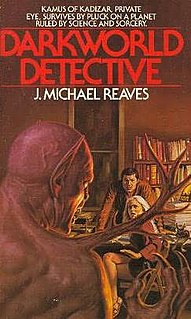 W
WDarkworld Detective is a collection of science fantasy stories written by J. Michael Reaves, published as a paperback original by Bantam Books in 1982. The linked stories feature protagonist, a detective on the planet Ja-Lur. An authorized sequel, The Black Hole of Carcosa, was written by John Shirley and published by Pocket Books in 1988.
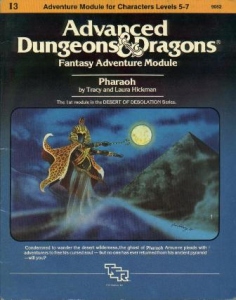 W
WDesert of Desolation is a compilation adventure module published by TSR for the Dungeons & Dragons (D&D) fantasy roleplaying game. It combines three previously published individual modules: Pharaoh, Oasis of the White Palm, and Lost Tomb of Martek. The modules were made for use with the first edition Advanced Dungeons & Dragons (AD&D) rules. Pharaoh was created by Tracy and Laura Hickman soon after the couple married in 1977, and published by TSR in 1982. Oasis of the White Palm was a collaboration between Tracy Hickman and Philip Meyers, and Hickman wrote the Lost Tomb of Martek on his own; both were printed in 1983.
 W
WDilvish, the Damned is a collection of fantasy stories by American writer Roger Zelazny, first published in 1982. Its contents were originally published as a series of separate short stories in various fantasy magazines. Prior to publication, Zelazny's working title for the book was Nine Black Doves. The working title was later re-used for the fifth volume of The Collected Short Stories of Roger Zelazny collection, as a tribute to Dilvish. The storyline begun in this collection was resolved in the novel The Changing Land, which was published before the other Dilvish stories appeared in book form.
 W
WDown the River is a book by Edward Abbey, published in 1982. It is a loose collection of autobiographical and philosophical essays about the wilderness, written between 1978 and 1982.
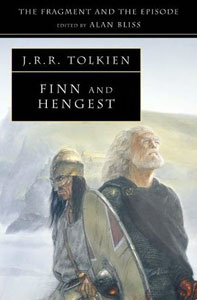 W
WFinn and Hengest is a study by J. R. R. Tolkien, edited by Alan Bliss and published posthumously in book form in 1982.
 W
WFunky Koval is a 4-part Polish science fiction/detective story/political fiction genre comic book published in Poland in the 1980s. It gained a cult following and is still recognized as one of the best Polish comics.
 W
WThe General's Wife is a horror short story by Peter Straub. It was first published in 1982 by Donald M. Grant, Publisher, Inc. in an edition of 1,200 copies and was issued without a jacket. The story is from a previously unpublished extract from the manuscript of Straub's novel, Floating Dragon.
 W
WGod Makes the Rivers to Flow is an anthology of spiritual texts for use in meditation, assembled by Eknath Easwaran. Condensed versions have been published under the titles Timeless Wisdom (book) and Sacred Literature of the World. First published as a book in the US in 1982, progressively enlarged or revised versions of God Makes the Rivers to Flow were also issued in the US in 1991, 2003, and 2009. English editions have been published in India, and a French edition has been published. The book has been reviewed in newspapers, magazines, professional journals, and websites, and utilized in research studies and education.
 W
WThe Invention of Solitude is Paul Auster's first memoir, published in the year 1982. The book is divided into two separate parts, Portrait of an Invisible Man, which concerns the sudden death of Auster's father, and The Book of Memory, in which Auster delivers his personal opinions concerning subjects such as coincidence, fate, and solitude, subjects that have become trademarks of Auster's works.
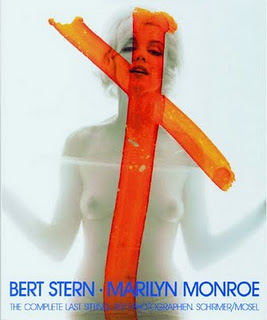 W
WThe Last Sitting is a book and photo shoot of Marilyn Monroe by photographer Bert Stern. The photo shoot was commissioned by Vogue magazine in late June 1962, taking place over three daily sessions, just six weeks before she died.
 W
WThe Lost City (B4) is a Dungeons & Dragons adventure module by Tom Moldvay. It was first published by TSR in 1982 and was designed as a stand-alone adventure for use with the Dungeons & Dragons Basic Set. The working title for the module was "The Lost City of Cynidecia". Moldvay designed the module as a low-level scenario to give novice Dungeon Masters experience in fleshing out adventures such that it is only partially complete. The plot involves the player characters discovering a ruined subterranean city slowly rising out of the sands. The adventure is set inside a huge step pyramid, with the lower pyramid only sketched out and the city itself described with a list of the major areas and a map. The adventure's main villain is Zargon, a giant one-eyed monster and his minions. The entire double pyramid, not including the city, contains over 100 rooms.
 W
WA Moving Target is a collection of essays and lectures written by William Golding. It was first published in 1982 by Faber and Faber but subsequent reprints included Golding's Nobel Prize lecture which he gave after being awarded the honour in 1983.
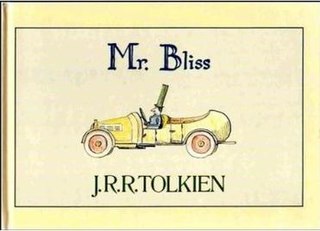 W
WMr. Bliss is a children's picture book by J. R. R. Tolkien, published posthumously in book form in 1982. One of Tolkien's least-known short works, it tells the story of Mr. Bliss and his first ride in his new motor-car. Many adventures follow: encounters with bears, angry neighbours, irate shopkeepers, and assorted collisions.
 W
WThe New King James Version (NKJV) is an English translation of the Bible first published in 1982 by Thomas Nelson. The New Testament was published in 1979, the Psalms in 1980, and the full Bible in 1982. It took seven years to complete. The anglicized edition was originally known as the Revised Authorized Version, but the NKJV title is now used universally.
 W
WNukespeak: Nuclear Language, Visions and Mindset is a 1982 book by Stephen Hilgartner, Richard C. Bell and Rory O'Connor. This book is a concise history of nuclear weapons and nuclear power in the United States, with special emphasis on the language of the "nuclear mindset".
 W
WThe Purple Decades: A Reader is a collection of the non-fiction writing of Tom Wolfe, published in 1982. The book contains 20 pieces of Wolfe's best-known writing.
 W
WRight Where You Are Sitting Now, fully titled Right Where You Are Sitting Now: Further Tales of the Illuminati, is a 1982 book of philosophical writings written by Robert Anton Wilson. Dedicated to William S. Burroughs and Philip K. Dick, this work covers Deadly Nightshade, The Jumping Jesus Phenomenon, The Universe Contains a Maybe, The Junkyard Dog, Is God a Dope? Or Just Plain Clumsy, Have Fun with Your New Head, and many other writings. The 1992 edition contains a new introduction by Timothy Leary.
 W
WThe Road to Middle-earth: How J. R. R. Tolkien Created a New Mythology is a scholarly study of the Middle-earth works of J. R. R. Tolkien written by Tom Shippey and first published in 1982. Two further editions extended and updated the work, including a discussion of Peter Jackson's film version of The Lord of the Rings.
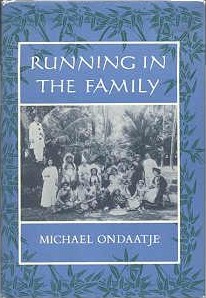 W
WRunning in the Family is a fictionalized memoir, written in post-modern style involving aspects of magic realism, by Michael Ondaatje. It deals with his return to his native island of Sri Lanka, also called Ceylon, in the late 1970s.
 W
WThe Sacred Journey: a memoir of early days (1982), is the first of four partial autobiographies written by Frederick Buechner. Published in 1982, the work describes the author's life up until his conversion to Christianity in 1953, at the age of twenty-seven.
 W
W"Soldier Boy" is a 1953 science fiction short story by American author Michael Shaara, about a soldier who, when sent on a routine patrol to a colonized world, saves the planet from an alien and its robot attack devices. Despite an ingrained contempt for the military that arose as part of conditioning to avoid war, the human colonists gradually assist the soldier when strange occurrences suggest they are not alone on the planet and may be, like several other colony planets, under threat of extermination by outside forces. It was originally published in the July 1953 issue of Galaxy Science Fiction. It is also the title of a 1982 collection of Shaara's short stories
 W
WTV: 2000 is a 1982 anthology of science fiction short-stories revolving around television and its implications. Its editors are Isaac Asimov, Charles G. Waugh, and Martin H. Greenberg.
 W
WVanishing Africa is the title of the 1982 English-language translation of German film director Leni Riefenstahl's Mein Afrika, an illustrations book published in the same year in Germany. It was published by Harmony Books in the United States.
 W
WThe World of the Dark Crystal is a companion book written in conjunction with the film The Dark Crystal. The book was designed and edited by Rupert Brown, with illustrations by Brian Froud—who was the conceptual designer for the film—and text by J. J. Llewellyn. It was originally published in 1982 by Alfred A. Knopf, Inc. In 2003 the book was re-released by Harry N. Abrams, Inc.
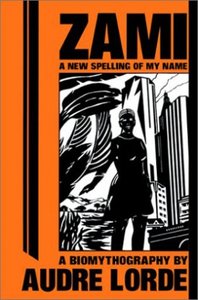 W
WZami: A New Spelling of My Name is a 1982 autobiography by American poet Audre Lorde. It started a new genre that the author calls biomythography, which combines history, biography, and myth. In the text, Lorde writes that "Zami" is "a Carriacou name for women who work together as friends and lovers", noting that Carriacou is the Caribbean island from which her mother immigrated. The name proves fitting: Lorde begins Zami writing that she owes her power and strength to the women in her life, and much of the book is devoted to detailed portraits of other women.